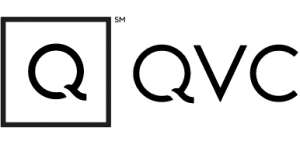This post contains affiliate links. Please see our disclosure policy.
Discover the key to weight loss motivation by finding your ‘why.’ Learn how aligning your goals with your personal purpose can lead to lasting results and a healthier lifestyle.
What’s the main reason behind your weight loss goals?
Finding your “why”—or the driving force behind your weight loss journey—is essential for staying motivated and achieving your goals.
But what is it, exactly? Are you losing weight simply to improve your physical appearance, or is it something else that drives you to make healthier choices?
I always tell my clients that their “why” for wanting to get healthier or lose weight needs to be tied to something deeper—having more energy, getting better sleep, improving relationships, becoming more active, or gaining clearer focus. Weight loss will be the byproduct of achieving these things.
Let’s explore how to keep your weight loss motivation strong the steps for finding your “why,” setting realistic goals, creating an action plan, and staying motivated along the way.

Save This Article To Read Later
1. Identify Your “Why” for Weight Loss
It’s essential to understand why you want to make a change in your life. Identifying your “why” can help keep you motivated and focused on achieving your goals.
Your “why” is the purpose behind the action that will drive you forward when times get tough.
I like to call it your “purpose statement.”
Your “why” should be more than just wanting a better physique; it needs to have emotional meaning. It connects to your life values and is so much deeper than just weight loss. Weight loss is the byproduct of your new habits.
Here are a few examples:
- Are you looking to improve your overall health?
- Do you want more energy or confidence?
- Are you trying to stay healthy for your kids or grandchildren?
- Do you have medical issues that would benefit from a healthier weight?
- Are you sick of being tired and looking to get better sleep?
No matter the incentive, figuring out why you’re striving for a transformation can assist in sustaining your dedication and keeping you on track to attaining your ambition. These deeper desires will eventually result in weight loss because you’ll change your habits to achieve them.
Once you’ve identified your why (and it can’t be “weight loss”—you need something meaningful!), it’s time to determine how you will get started by setting your goals.
2. Set Realistic Goals
Building realistic goals helps focus your energy and create a plan for reaching the desired outcome. Goals should be realistic, measurable, and achievable within a reasonable amount of time.
Here are a few easy steps you can take toward setting realistic goals for maintaining weight loss motivation:
Break Down Large Goals Into Smaller Steps
To ensure that you are setting yourself up for success, it’s best to break down large goals into smaller tasks or steps. Smaller objectives can be established to make the larger goal more manageable and keep you inspired as you progress.
Example: If your aim is to shed 10 pounds by the start of summer, break it down into bite-sized portions, such as losing 1-2 lbs per week for the upcoming months.
Set Weekly or Monthly Mini-Goals
These small successes will add up over time and help keep you on track toward achieving your overall goal.
Example: Exercise three-five times a week for 20 minutes or cut out sugary snacks from your diet completely.
Find Your Support System
When aiming to reach objectives, consider who or what support systems you can utilize to ensure success.
Examples:
- Consider asking for support from friends and family who can offer encouragement when needed.
- Join a gym with knowledgeable trainers who can provide guidance during workouts.
- Connect with an online community where people share their experiences related to similar objectives so that you don’t feel isolated on your journey toward success.
3. Create an Action Plan
Once your goals are set and organized, it’s time to create a plan of action for maintain weight loss motivation. This is often where people stop. They set their goals but never really decide how they will actually make them happen.
Creating a solid action plan is essential to achieving any goal. Think of this as the roadmap that will help you get from where you are now to where you want to be.
An action plan will lay out the daily, weekly, and even monthly tasks you need to do. It also involves a timeline for completing each step.
Here are a few simple steps for creating your action plan to keep your weight loss motivation high:
Create a “Stop/Start Doing” List
This helps identify the habits you know you need to stop doing and creates awareness of the habits you’d like to adopt.
Example: Let’s say your goal is to eat healthier. Here is your “stop/start doing” list:
- During week one, eliminate added sugars from your diet. (I.e., something to stop doing.)
- During week two, make sure you’re getting five anti-inflammatory fruits and vegetables per day. (I.e., something to start doing.)
- During the following weeks, add more things to stop and start doing. You’ll create better habits as you do!
Create Timelines That Help Fit in New Routines
Consider how much time and effort each new habit will take to fit into your lifestyle without becoming overwhelming or too difficult to manage.
Example: If your nearest gym is 30 minutes away, maybe exercising at home is a better choice. If necessary, adjust the timeline accordingly to work along with your schedule and other commitments. These are my recommendations for the best home gym equipment to workout at home!
Build In Rewards
Make sure you add in rewards along the way! This could be in the form of self-care after reaching certain milestones or celebrating small victories with the purchase of something you’ve wanted for a while.
You decide what works for you, but make sure you celebrate the milestones because you deserve it!
Monitor Your Progress
Regularly monitor progress on each task with weekly reviews. This holds yourself accountable and keeps you motivated!
Remember that you might not reach your goals in the first weeks or months—but don’t get discouraged. Just ensure your action steps are realistic and achievable so they don’t become overwhelming or discouraging.
4. Journal Your “Why”
Journaling your “why” is a powerful tool to help you stay focused and motivated on the path toward creating a healthier, happier life.
Writing down how you feel before beginning any kind of lifestyle change helps you stay connected with yourself during moments of doubt or discouragement. It allows you time to reflect on your progress thus far and what lies ahead if you remain committed over time.
Journaling before, during, and after your progress allows you access to your innermost thoughts, which gives clarity during the journey.
I’m also a big believer in positive affirmations. Add some to your journal to read them every day to connect yourself back to your “why.”
Expert Tip: As progress is made toward each goal, reviewing your notes and thoughts is insightful! It provides motivation to keep going and allows you to look back over your journey and appreciate how far you’ve come since setting out on your path toward self-improvement.
Bonus Weight Loss Motivation Tips
Keeping weight loss motivation high can be a challenge when progress seems slow or difficult. I always say, “strive for progress, not perfection.”
Weight loss is hard. You need to dig deep inside, find your grit, be patient, and stay the course.
Here are some bonus ideas to maintain your weight loss motivation:
- Celebrate small wins: Celebrating small wins along the way can help keep you focused and motivated on your larger goal. Acknowledge each step forward as an accomplishment and reward yourself with something special, like a massage or a night out with friends.
- Visualize your goals: Take time to visualize what achieving your goals would look like in detail. Connect to how you feel as you get closer. This will help remind you why you are working on these new habits and motivate you to keep going even when things get tough.
- Find inspiration: Surround yourself with positive people who have achieved their goals or are currently working towards them. Reading stories of success from others can also provide great inspiration and motivation for your own journey ahead.
- Break down goals into manageable steps: Breaking down large goals into smaller steps makes them more manageable and less intimidating, which helps maintain motivation levels over time. Make sure the steps are realistic and don’t become overwhelming. Setting unrealistic expectations can lead to discouragement rather than motivation if not met quickly enough.
With dedication and perseverance, finding your “why” can be a powerful tool in helping you reach success with weight loss. So ask yourself—what is my “why?”
FAQs About Finding Your “Why”
Your “why” for getting healthier might be to wake up every day and feel happy, reduce joint and back pain, be able to play with your grandkids, or be capable of traveling or enjoying outdoor activities. Whatever your “why,” own it and enjoy life!
Because typically, it elicits a quick-fix mentality and focuses on vanity. It’s not about having six-pack abs; it’s about being healthy and mobile over the years. It’s about having your mental health and your physical well-being. Your “why” connects to your life values. It’s so much deeper than weight loss. Weight loss is the byproduct of your new habits.


